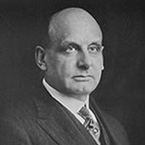
Often found named in the pages of the New York Times, Silas P. Beebe stirred considerable controversy in the early days of cancer research. In 1912, he reported his use of an extract he called autolysin in patients with incurable cancer, and it was hailed by the media as a “cure,” although it was not called that by Dr. Beebe. The extract was recommended for use in patients whose tumors had been resected to prevent recurrences. He treated patients at several New York institutions and reported that their lives were prolonged and suffering mitigated by use of the extract, which he described as a mixture of five different types of leaves, several whole plants, roots, flowers, fruit, and wood, with the 12 ingredients extracted and treated for 14 days.
Dr. Beebe was criticized for his commercial exploitation of the treatment in the lay press and the lack of scientific evidence available for other researchers to duplicate his work. When the treatment was declared a failure in the Journal of the American Medical Association in 1915 by another early AACR leader, Dr. Richard Weil, Dr. Beebe was asked to resign as professor of experimental therapeutics at Cornell, and his department there was abolished. He was also asked to resign from the American Society for Pharmacology and Experimental Therapeutics for knowingly making false statements on a scientific subject.” His personal life was as dramatic as his professional difficulties, and also played out in the Times.
He received undergraduate degrees at Valparaiso University (1896) and Harvard University (1900), MS (1902) and PhD (1904) degrees from Yale, and an MD from Cornell (1909). Immediately after graduation from Cornell, he was appointed professor of experimental therapeutics, a post he held until his dismissal six years later. He was also a member of the medical board of Memorial Hospital during his time at Cornell. He was an active participant in AACR Annual Meetings, giving papers on hemolytic reactions in lymphosarcoma in dogs and the use of transfusions in sarcoma (1907), further observations on lymphosarcoma in dogs and a study of proteids of tumors (1908), preliminary results of treating cancer with cancerous ascetic fluid injected subcutaneously (1910), the effects of fulguration and non-carbohydrate diet on rat sarcomas (1913), and further studies on diet (1914).
Dr. Beebe practiced medicine in New York City after he left Cornell, devoting his attention to thyroid physiology. He also continued to participate in several professional organizations, including the Huntington Fund for Cancer Research and the American Association for the Advancement of Science. He had limited participation in affairs of the AACR after the founding years. At some point after 1914 he resigned his membership in the association, although the date was not recorded.